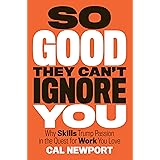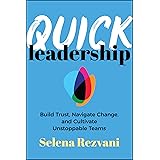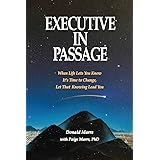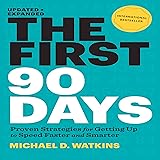The contemporary job market, as starkly illustrated in the accompanying video, has evolved into a labyrinthine gauntlet, often perceived as less a pathway to employment and more a ritualistic interrogation of one’s worth by unfeeling algorithms. Navigating this landscape, which might be aptly termed ‘job searching in 2025,’ frequently involves an array of challenges that can leave even the most seasoned professionals feeling disoriented. The days of simply submitting a resume and cover letter and expecting a human review seem to have been relegated to a bygone era.
Indeed, a grim reality has settled over the employment sector, where the human element is frequently marginalized in favor of automated systems. A profound understanding of these underlying mechanisms has become essential for anyone hoping to secure a position. It is no longer sufficient merely to possess the requisite skills; one must also master the intricate dance of digital compliance and algorithmic appeasement.
Deconstructing the Digital Gatekeepers: Applicant Tracking Systems
The initial hurdle in almost any modern job application is the Applicant Tracking System (ATS), a software solution that acts as a digital bouncer for your resume. It is widely acknowledged that over 75% of resumes are unceremoniously discarded by these systems before a human ever lays eyes upon them. This is not due to a lack of talent or experience on the part of the applicant, but rather a misalignment with the ATS’s stringent, often illogical, criteria.
Imagine, if you will, a vast digital sieve meticulously sifting through countless applications, its primary directive being the identification of specific keywords and formatting cues. If one’s resume is not meticulously tailored to mirror the language of the job description—incorporating LSI keywords, action verbs, and precise phrasing—it is often consigned to the digital bin. The ATS, a soulless bureaucrat with an inherent distrust of anything deviating from its programmed parameters, operates without empathy or contextual understanding. For example, failing to use terms like “results-oriented,” “self-starter,” or “collaboration” in sufficient measure can be enough to trigger an immediate rejection, regardless of actual competency.
Strategies for Algorithmic Appeasement
Despite the inherent frustrations, a strategic approach can be adopted to enhance one’s chances of passing the initial ATS scan. It is often recommended that job seekers analyze the job description with a fine-tooth comb, identifying key phrases and responsibilities, and then meticulously weave these terms into their resume and cover letter. Furthermore, the use of standard, clean formatting is generally preferred, as elaborate designs or unusual fonts can sometimes confuse the parsing capabilities of these systems. PDFs are frequently preferred, but some systems still recommend .docx; understanding the specific requirements of the portal is critical.
The Illusion of ‘Entry-Level’ and the Enigma of ‘Ghost Jobs’
Should an application successfully navigate the ATS gauntlet, the next challenge often emerges in the form of unrealistic expectations. It is frequently observed that positions labeled ‘entry-level’ are subsequently described with requirements demanding three to five years of experience, a Master’s degree, and a litany of accomplishments usually associated with a seasoned professional. This incongruity effectively transforms a junior role into an executive-level quest, requiring, perhaps, even divine intervention to fulfill the stated criteria.
Moreover, the modern job market is replete with what have come to be known as ‘ghost jobs.’ These are job listings that, by all appearances, represent genuine opportunities but are, in fact, never intended to be filled. They may serve various internal corporate purposes, such as justifying HR departmental budgets during quarterly reviews or maintaining an illusion of growth. Imagine spending hours meticulously crafting a bespoke cover letter and optimizing a resume, only for the position itself to be a phantom, a mere placeholder in the digital ether. This phenomenon contributes significantly to the feeling of futility that pervades the job search experience.
The Echo Chamber of AI: When Machines Converse
The rise of artificial intelligence has introduced another layer of complexity to the hiring process, creating an environment where machines are increasingly interacting with other machines. It is not uncommon for AI tools to be utilized by job seekers to craft compelling cover letters and resumes, given the sheer volume of applications and the demands for keyword optimization. However, a fascinating, albeit cynical, double standard often surfaces: while job applications are frequently screened by AI-powered resume bots, a substantial 54% of hiring managers have indicated that they would outright reject an applicant if they suspected AI was used in the creation of their application materials.
This situation can be characterized as a peculiar form of corporate gaslighting, where the very tools used by the system to streamline its operations are deemed unacceptable for candidates. The job seeker is caught in a digital pincer movement, expected to optimize for AI screening while simultaneously being penalized for using AI to achieve that optimization. It is akin to being asked to run a race, but only with one leg, while your competitors are on bicycles.
The Interrogation Marathon: Beyond the Written Word
For those fortunate enough to clear the initial digital hurdles, the interview process often presents a multi-stage, protracted affair. It is not uncommon for a candidate to undergo five or more interviews, each designed to probe different facets of their professional persona. These can range from perfunctory screenings with recruiters, who sometimes appear to be reviewing the resume for the first time, to more esoteric sessions with managers who might inquire about one’s preferred animal during an apocalypse. Panel interviews, often characterized by emotionally vacant employees and an undercurrent of silent judgment, are also frequently deployed.
Perhaps one of the most contentious developments in this phase is the proliferation of AI-driven interview platforms such as HireVue or Pymetrics. These systems record candidates responding to pre-recorded questions, subsequently analyzing various data points including eye movements, vocal tone, and even blink frequency, to determine enthusiasm and cultural fit. Imagine failing an interview because your blink frequency was detected as “three times higher than baseline,” or your voice was deemed to carry “sarcasm level 98%,” leading to a conclusion of “hostile to synergy.” This automated, data-centric evaluation of one’s essence can feel profoundly dehumanizing, reducing a complex individual to a mere collection of quantifiable behaviors.
Decoding the Corporate Performance: Passion and Cultural Fit
Beyond technical competencies, the modern job market places an intense, almost evangelical, emphasis on ‘passion’ and ‘cultural fit.’ It is no longer sufficient merely to desire a job; candidates are often expected to exhibit an almost fetishistic love for the brand and an aching zeal for tasks such as “coordinating cross-functional deliverables” or “strategizing agile pivots.” An honest declaration of needing the job for financial reasons, while fundamentally true for most, is often considered a red flag, deemed insufficiently passionate.
Similarly, the concept of ‘cultural fit’ has emerged as a pervasive, albeit often vaguely defined, criterion. This frequently translates to an expectation that candidates embody a persona of “vague, cheerful platitudes” while suppressing any evidence of individuality or critical thought. Phrases like “we are a high-energy team,” “we believe in radical transparency,” or the particularly unsettling “we’re like a family here,” are commonly encountered. While seemingly innocuous, these can sometimes serve as veiled indicators of environments where boundaries are blurred, expectations are unreasonable, and dissent is implicitly discouraged. A genuinely healthy workplace culture should not require a performance of perpetual enthusiasm, but rather foster an environment where diverse perspectives are genuinely valued.
The Lingering Silence: Ghosting and the Prolonged Wait
Even if a candidate manages to navigate the algorithmic minefield, charm their way past personality tests, and survive the arduous interview gauntlet, there remains no guarantee of a timely, or even any, response. Silence has become the default rejection in many sectors. It is staggering to consider that approximately 86% of applications are ignored more thoroughly than the terms and conditions during an iOS update. This phenomenon, which transcends mere ghosting, might be more accurately termed “corporate necromancy,” where an applicant is never truly rejected but rather never even acknowledged, existing as an unaddressed entity in the hiring purgatory.
The average hiring process now stretches to a staggering 44 days. This prolonged wait, often punctuated by a lack of communication, unpaid assignments, and intense psychological scrutiny, takes a significant toll on candidates. Imagine dedicating over a month and a half to a process, only to discover the role was likely filled internally by a CEO’s nephew or a pre-selected candidate, leaving the external applicants as mere statistical fodder. This protracted and often opaque process exacerbates the feelings of frustration and despair for many seeking employment.
The “Career Catfishing” Phenomenon and Navigating the New Normal
In response to this increasingly demanding and often dehumanizing system, a curious counter-trend has emerged, particularly among younger generations. Roughly one in three Gen Z workers are now reported to accept job offers with no intention of ever showing up for the role. This phenomenon, colloquially termed “career catfishing,” represents a poignant, albeit unconventional, form of resistance. It is a final, emphatic “no thanks” to a system that often demands a candidate’s time, energy, and dignity in exchange for a meager salary and a job title that often reads like a Mad Libs accident, such as “Junior Integrated Growth Champion Remote Three Days Onsite.”
The modern job market, therefore, presents a complex and often contradictory challenge. For job seekers, success in this environment often requires a blend of cynical realism, strategic optimization, and unwavering resilience. While the system may demand a theatrical performance of passion and cultural fit, maintaining one’s authentic self while strategically conforming to algorithmic demands becomes the new tightrope walk. Ultimately, the ability to navigate these shifting sands, understanding both the overt and subtle demands of the current hiring process, is paramount for anyone engaged in job searching in 2025.









